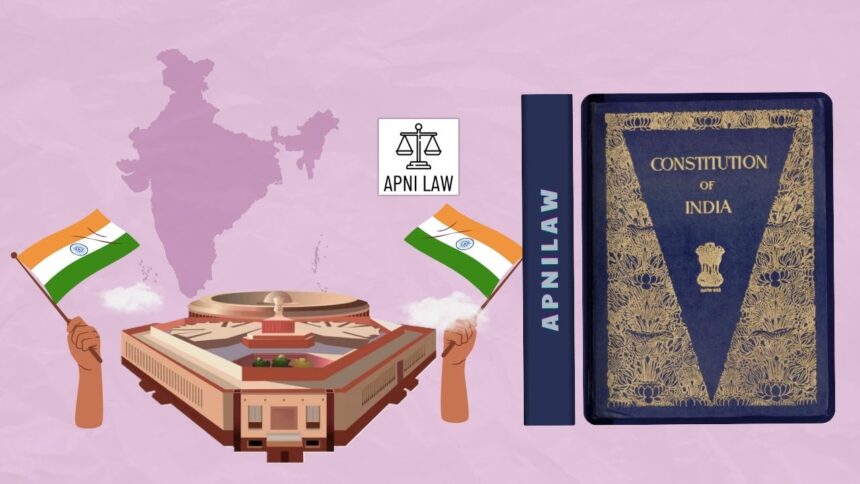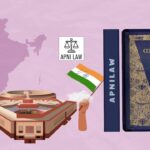Introduction
India’s Constitution is a unique blend of democracy, rule of law, and fundamental rights. Yet, it also anticipates extreme situations where ordinary laws and governance mechanisms may not be enough to restore order. One such provision is Martial Law. While many confuse it with Emergency provisions, Martial Law in India has a distinct meaning, history, and constitutional position. It refers to the substitution of military authority in place of civilian rule when civil governance completely breaks down.
Unlike Emergency under Articles 352, 356, and 360, Martial Law does not suspend the Constitution itself but allows the military to step in temporarily. However, its application is highly restricted and carefully balanced to avoid misuse in a democratic setup.
What is Martial Law?
Martial Law is the temporary takeover of administration by the armed forces in a region where civil authorities fail to function. It suspends ordinary law enforcement and vests extraordinary powers in the military to control law and order. The objective is not to replace democracy permanently but to restore peace and stability.
In India, the Constitution under Article 34 refers to Martial Law. Article 34 empowers Parliament to indemnify officers or authorities for actions taken under Martial Law and allows restrictions on Fundamental Rights during such a proclamation. This provision shows that the framers recognized the possibility of grave breakdowns in governance but sought to regulate it under the Constitution itself.
Martial Law vs. Emergency in India
People often confuse Martial Law with Emergency provisions. However, the two differ fundamentally. During a National Emergency (Article 352), the Union assumes extraordinary powers, and Fundamental Rights like Article 19 may remain suspended. But civilian institutions, legislatures, and courts continue functioning.
In contrast, Martial Law implies the suspension of civilian authority in a specific area. The military takes charge directly, often curtailing normal governance functions. Courts may also suspend their ordinary jurisdiction, though in India judicial review is never fully excluded.
Thus, while Emergency strengthens the executive under constitutional authority, Martial Law replaces civil administration with military control in extreme situations.
Historical Context of Martial Law in India
The concept of Martial Law in India predates the Constitution. During colonial times, the British used Martial Law provisions ruthlessly. The most infamous example was the Jallianwala Bagh tragedy of 1919, where Martial Law was declared in Punjab, and General Dyer’s actions left a deep scar on Indian history.
Such misuse under colonial rule made Indian leaders cautious. While drafting the Constitution, they accepted the need for Martial Law in extreme cases but ensured it was narrowly defined and constitutionally regulated. Article 34 was inserted to prevent arbitrary military rule, unlike the sweeping powers once exercised by the British.
Constitutional Position of Martial Law in India
Article 34 of the Constitution lays down the framework for Martial Law. It states that when Martial Law is in force in any area, Parliament may indemnify officers for acts done under such law and impose restrictions on Fundamental Rights.
Key features of Martial Law in India include:
- It can be declared only when civil administration completely breaks down.
- It operates in a specific area, not the whole country.
- Parliament retains the power to regulate its scope and consequences.
- Fundamental Rights may face restrictions, but judicial review ensures that actions remain within constitutional limits.
This shows that Martial Law in India is not absolute. Unlike in some countries where military rule replaces democracy, the Indian Constitution limits its operation to preserve democratic values.
Judicial Perspective on Martial Law
Indian courts have not had frequent opportunities to deal with Martial Law since its use has been rare in independent India. However, judicial principles emphasize that even during Martial Law, rule of law cannot be entirely displaced. The judiciary retains its authority to check whether actions taken are proportionate and justified.
In cases related to Emergencies, such as ADM Jabalpur v. Shivkant Shukla (1976), the Court initially upheld restrictions on rights but later reversed such stances in subsequent rulings. This evolution indicates that if Martial Law is ever declared, the judiciary would scrutinize it carefully to ensure constitutional boundaries are not crossed.
Martial Law in Practice: Has It Been Used in Independent India?
Since 1950, India has not witnessed the formal declaration of Martial Law under Article 34. The framers designed it as a last resort, and governments have generally relied on Emergency provisions or special laws such as the Armed Forces Special Powers Act (AFSPA) to handle crises.
For example, in insurgency-affected regions like Jammu and Kashmir or the North-East, AFSPA has been used instead of Martial Law. This shows that the government prefers legal mechanisms that function within civil administration rather than resorting to full military control.
Criticism of Martial Law
Martial Law has always been a controversial idea. Critics argue that it undermines democracy, restricts rights, and concentrates excessive power in the hands of the military. The colonial legacy of abuse, particularly in Punjab in 1919, makes many wary of its implications.
However, defenders argue that Martial Law is not meant to be a permanent replacement for democracy. It is a temporary constitutional tool designed for extraordinary breakdowns in law and order. The very inclusion of Article 34 reflects the framers’ foresight that India’s unity and integrity might sometimes demand exceptional measures.
FAQs on Martial Law in India
Q1: What is the difference between Emergency and Martial Law in India?
Emergency strengthens the powers of civilian authorities, while Martial Law replaces them with military control in a particular area.
Q2: Can Martial Law suspend Fundamental Rights in India?
Yes, Article 34 permits restrictions on rights during Martial Law, but courts retain the power of judicial review to check misuse.
Q3: Has Martial Law ever been declared in independent India?
No, India has never declared Martial Law since 1950. The government has relied on constitutional emergencies and special laws instead.
Conclusion
Martial Law in India represents an extraordinary constitutional provision designed for rare situations of complete breakdown of civil governance. Rooted in colonial history but constitutionally safeguarded, it gives the military temporary authority while keeping Parliament and judiciary as checks against misuse.
Though never used in independent India, Martial Law remains an important reminder of the Constitution’s flexibility to handle emergencies without permanently compromising democracy. By keeping its scope narrow and subject to constitutional review, India ensures that even in times of crisis, rule of law and democratic principles remain supreme.
For any specific query call at +91 – 8569843472








